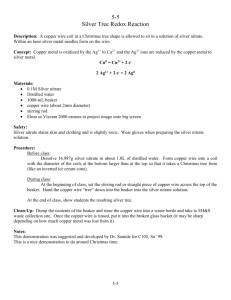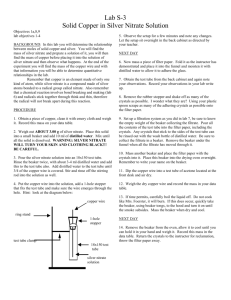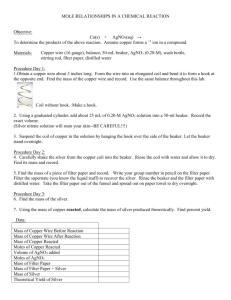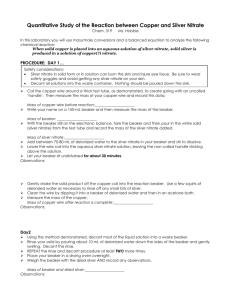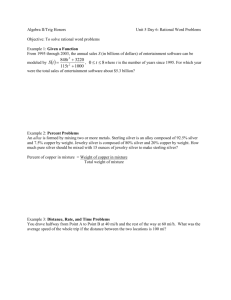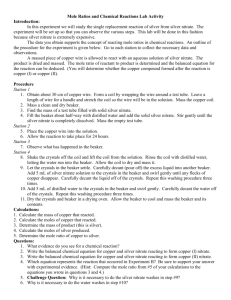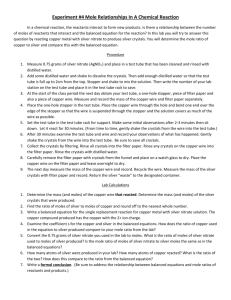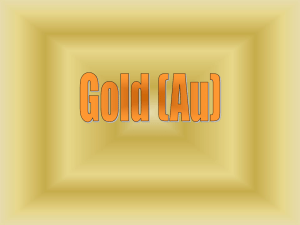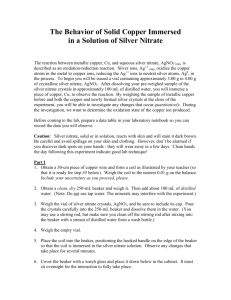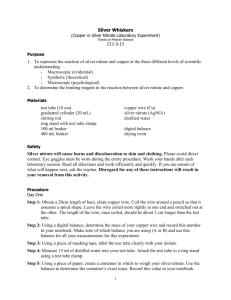Copper-Silver Nitrate Reaction
advertisement
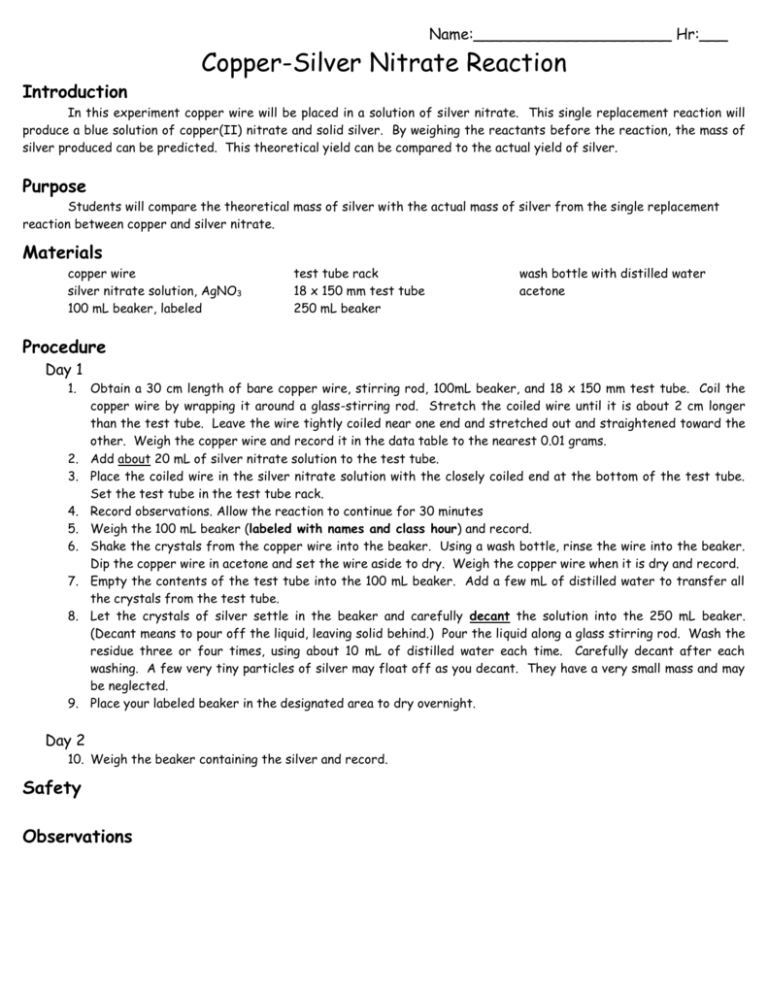
Name:_____________________ Hr:___ Copper-Silver Nitrate Reaction Introduction In this experiment copper wire will be placed in a solution of silver nitrate. This single replacement reaction will produce a blue solution of copper(II) nitrate and solid silver. By weighing the reactants before the reaction, the mass of silver produced can be predicted. This theoretical yield can be compared to the actual yield of silver. Purpose Students will compare the theoretical mass of silver with the actual mass of silver from the single replacement reaction between copper and silver nitrate. Materials copper wire silver nitrate solution, AgNO3 100 mL beaker, labeled test tube rack 18 x 150 mm test tube 250 mL beaker wash bottle with distilled water acetone Procedure Day 1 1. 2. 3. 4. 5. 6. 7. 8. 9. Obtain a 30 cm length of bare copper wire, stirring rod, 100mL beaker, and 18 x 150 mm test tube. Coil the copper wire by wrapping it around a glass-stirring rod. Stretch the coiled wire until it is about 2 cm longer than the test tube. Leave the wire tightly coiled near one end and stretched out and straightened toward the other. Weigh the copper wire and record it in the data table to the nearest 0.01 grams. Add about 20 mL of silver nitrate solution to the test tube. Place the coiled wire in the silver nitrate solution with the closely coiled end at the bottom of the test tube. Set the test tube in the test tube rack. Record observations. Allow the reaction to continue for 30 minutes Weigh the 100 mL beaker (labeled with names and class hour) and record. Shake the crystals from the copper wire into the beaker. Using a wash bottle, rinse the wire into the beaker. Dip the copper wire in acetone and set the wire aside to dry. Weigh the copper wire when it is dry and record. Empty the contents of the test tube into the 100 mL beaker. Add a few mL of distilled water to transfer all the crystals from the test tube. Let the crystals of silver settle in the beaker and carefully decant the solution into the 250 mL beaker. (Decant means to pour off the liquid, leaving solid behind.) Pour the liquid along a glass stirring rod. Wash the residue three or four times, using about 10 mL of distilled water each time. Carefully decant after each washing. A few very tiny particles of silver may float off as you decant. They have a very small mass and may be neglected. Place your labeled beaker in the designated area to dry overnight. Day 2 10. Weigh the beaker containing the silver and record. Safety Observations Data Calculations 1) Write a balanced equation for copper plus silver nitrate. 2) Which reactant is the limiting reactant? Which reactant is in excess? Why? 3) Determine the mass of copper reacted. Show work. 4) Determine the number of moles of copper reacted. Show work. 5) Calculate the expected mass of silver produced from this reaction (theoretical yield). Show work. 6) Determine the experimental mass of silver produced (actual yield). Show work. 7) What is your percent yield? Percent error? Show work. 8) If your percent yield is not 100%, explain why. Think about the procedure! 9) How many atoms of silver were formed in your experiment?
